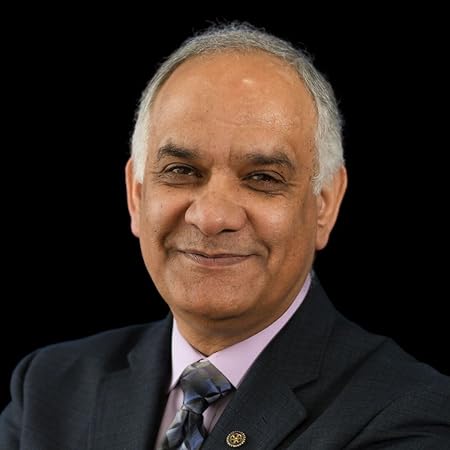If retirement is on your horizon, you’ve probably spent quite a lot of time “doing the math” – working through the knowns and the unknowns of your finances, trying to predict how secure you’re likely to be. For a handful of soon-to-be-retirees, there’s no stress in this exercise at all: they have plenty of resources and few concerns about retirement income. But for most of us, that’s not the case.
Here at the Blog, we read articles every week about planning for retirement, and one conclusion that’s inescapable is that each retiree’s journey is different. Nowhere is that more obvious than in the area of money. Many retirees with minimal savings enjoy their so-called golden years with relative comfort and peace of mind, content with their circumstances. Others who have far more money seem to exist in a constant state of anxiety, fearful that every stock market hiccup might be the harbinger of disaster. Such is the relationship between the heart and the wallet.
With that in mind, we were intrigued to read this recent article from CNBC in which reporter Andreina Rodriguez takes a look at average retirement savings by age group. At first, we were tempted to ignore this article, since average saving rates aren’t an especially good predictor of retirement success.
But then we examined the numbers a bit more closely, and we realized an obvious fact: there’s a huge difference between average retirement savings and median retirement savings. That difference tells us that the majority of seniors may be even less financially prepared for retirement than is generally recognized. Let’s see what the numbers show.
Comparing Retirement Nest Eggs: Interesting but Irrelevant?
Writing for CNBC, Rodriguez begins with a simple statement. “When it comes to our retirement nest egg,” she writes, “we can’t help but wonder where we stand compared to our cohorts.”
She’s probably right in that we’re often curious to see how we stack up against our peers. But we might suggest (as noted above) that, while comparing the so-called nest egg of Retiree A with that of Retiree B might be interesting, it bears little relevance to how happy, fulfilled, and secure each might be as they age. As Rajiv Nagaich reminds us repeatedly, retirement planning and financial planning are not the same.
For her article on retirement savings by age group, Rodriguez refers to Vanguard’s “How America Saves” yearly report for 2025. The good news, as she writes, is that “Americans’ 401(k) savings rates are at record highs,” with an overall average balance across all age groups in 2024 of $148,153.
But is that an accurate snapshot? We don’t think so.
For Older Savers, Average Balance is Triple the Median Amount
In her review of the numbers, Rodriguez uses the common shortcut of quoting average figures. That means you calculate the total amount of money in 401(k) accounts, divided by the number of savers. But that figure is distorted by the highest balances. All it takes is a relative handful of 401(k) accounts worth $1 million or more to tilt the average figure considerably.
The Vanguard stats bear this out. For savers in the 55-64 age group, the average 401(k) balance is $271,320. For the oldest savers, those 65-plus, that figure is $299,442. CNBC notes that the figures are fairly close because older savers have likely started taking withdrawals.
Median Balances Give a Much More Accurate Snapshot
But instead of looking at average savings, let’s consider the median balance. “Median” means midpoint: half of all savers have higher balances and half have lower balances.
The CNBC article notes the discrepancy. “You’ll see that the averages are much higher than the median figures,” Rodriguez writes, “since averages are skewed by the few large balance accounts. For this reason, the median numbers give a better sense of what most people have actually saved.”
Looking at the 55 to 64-year-old cohort, compared with the average balance of over $271,000, the median balance is just $95,642. The oldest savers show a similar gap: an average of just below $300,000, compared with a median of $95,425. The more accurate median amount is barely one-third of the distorted average figure.
Our take-away: using the median 401(k) balance as a benchmark makes older Americans appear even more unprepared for their retirement years.
Among Americans 50-plus, 20 Percent Have No Retirement Savings
As we considered this bleak set of statistics, we decided to check out another source to see how experts advise those with little or no savings to approach their retirement years. We reviewed this Moneywise article from late 2024, written by Maurie Backman, a financial reporter whose work we have quoted in the past. Backman is answering a hypothetical question: how will a 65-year-old with no savings ever be able to retire?
She begins with a grim fact from a 2024 report by AARP: 20 percent of Americans aged 50 and over have no retirement savings at all. “The U.S. Government Accountability Office paints an equally dire picture,” Backman writes. “As of 2022, 32 percent of households with a worker age 55 and older had no savings for retirement or defined benefit plan.”
But instead of giving in to feelings of hopeless, Backman offers tangible advice. “Here’s how to salvage your situation so you don’t have to hold down a job until the day you die,” she writes.
Start With What You Have, Especially Social Security
“Just because you don’t have savings going into retirement doesn’t mean you won’t have access to income,” Backman reminds readers. “If you’ve worked all or most of your life, you’re likely eligible for Social Security.” Right now, the average benefit is $1,925 per month.
“If that’s your sole income source, you’re eligible for those monthly checks free and clear of federal taxes, since you’re below the threshold at which Social Security gets taxed,” Backman advises. That’s about $23,000 in tax-free income per year.
Of course, if you can possibly delay taking benefits, that decision will pay dividends for the rest of your life. Every year you delay past full retirement age boosts your Social Security payments by about 8 percent. That’s a powerful incentive to keep working if you can.
Home Equity Provides Another Potential Income Source
You may also be able to use your home as a source of income, Backman suggests. Many seniors have little savings but are still sitting on a sizeable nest egg in the form of their house.
“The National Council on Aging says that U.S. homeowners aged 65 and over have a median home equity of $250,000,” Backman writes. “If you were to sell your home and replace it with a less expensive one, you may be able to walk away with a profit that can serve as your nest egg in the absence of separate savings.”
Another option Backman doesn’t mention is a Home Equity Conversion Mortgage (HECM), better known as a reverse mortgage. Qualifying homeowners can establish a line of credit for use as needed. Another option: you may be able to receive regular monthly payments as part of a reverse mortgage. Just make sure you get good advice from a financial adviser before you decide that an HECM is for you.
(We wrote about how growing home equity is triggering a fresh look at reverse mortgages here on the Blog earlier this spring.)
Establish a Frugal Budget and Make It Stick
Even if you’re retiring on limited means, such as Social Security alone, you can still make it work. But it will take work to establish a budget and live within your resources.
“A recent Gallup poll found that 23 percent of retirees say their only major income source in retirement is Social Security,” says Backman, “and 60 percent of this group say they have enough money to be comfortable.”
But, she adds, besides putting yourself on a tight budget, “you might also have to come to terms with seeking out free entertainment if there’s not a lot of wiggle room in your finances for leisure.” Fortunately, in most communities, there’s a growing number of resources available.
“Many libraries and community centers offer free programming for seniors,” says the Moneywise article. “And you may find that you’re able to snag discounts on museums and public transportation, thereby giving you the ability to stretch a very limited leisure budget.” Backman also suggests investing $20 t0 join AARP which qualifies you for entertainment, travel and dining discounts.
Augment Your Income with Part-Time or Gig Work
Some retirees are desperate to leave their regular job – but that might not mean they’ve left the workforce entirely.
“Of course, another option is to continue working well beyond age 65 – but not full-time, and not at a job you hate,” writes Backman. “The gig economy could make it possible to earn money doing something you enjoy, whether it’s teaching an instrument you play well or moonlighting as a carer for pets.”
The bottom line is to live with a combination of discipline and creativity.
“You may find that between a few hours of gig work per week plus Social Security, you’re able to live comfortably, provided you’re careful in how you spend,” Backman concludes. “So while retiring on zero savings isn’t optimal, there are ways to work around the situation so you’re not left plugging away at a full-time job for the rest of your life.”
Rajiv Nagaich – Your Retirement Planning Coach and Guide
The long-awaited book by Rajiv Nagaich, called Your Retirement: Dream or Disaster, has been released and is now available to the public. Retirement: Dream or Disaster joins Rajiv’s ground-breaking DVD series and workbook, Master Your Future, as a powerful planning tool in your retirement toolbox. As a friend of AgingOptions, we know you’ll want to get your copy and spread the word.
You’ve heard Rajiv say it repeatedly: 70 percent of retirement plans will fail. If you know someone whose retirement turned into a nightmare when they were forced into a nursing home, went broke paying for care, or became a burden to their families – and you want to make sure it doesn’t happen to you – then this book is must-read.
Through stories, examples, and personal insights, Rajiv takes us along on his journey of expanding awareness about a problem that few are willing to talk about, yet it’s one that results in millions of Americans sleepwalking their way into their worst nightmares about aging. Rajiv lays bare the shortcomings of traditional retirement planning advice, exposes the biases many professionals have about what is best for older adults, and much more.
Rajiv then offers a solution: LifePlanning, his groundbreaking approach to retirement planning. Rajiv explains the essential planning steps and, most importantly, how to develop the framework for these elements to work in concert toward your most deeply held retirement goals.
Your retirement can be the exciting and fulfilling life you’ve always wanted it to be. Start by reading and sharing Rajiv’s important message. And remember, Age On, everyone!
(originally reported at www.cnbc.com and https://moneywise.com)


